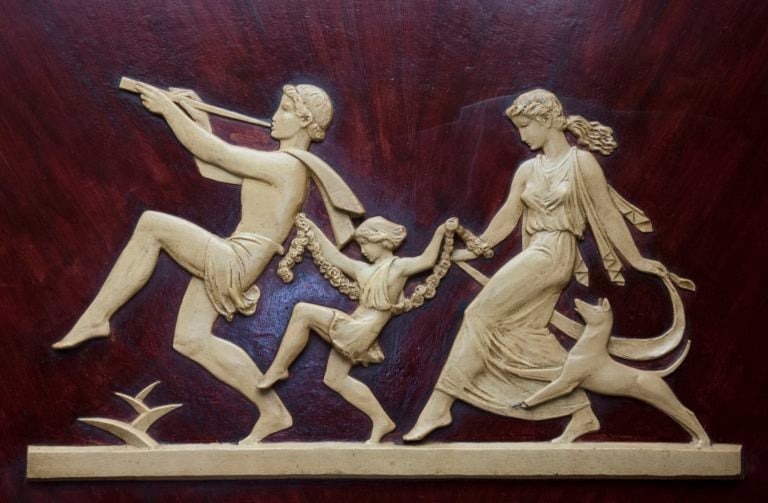The iconic Greek cafe celebrated its centenary in 2016. Over most of that time, the Simos family had established, developed and operated the Paragon.
True to its name, this food catering institution is unquestionably the finest remaining example of the Greek cafe phenomenon of 20th century Australia. It has high Art Deco architectural styles and furnishings created by renowned architects, designers, and artists and an ongoing reputation for high quality custom-made chocolates and pastries. The Paragon offers its customers a bygone era of popular dining.
Their development during the 20th century evidences the full evolution of the Greek cafe in Australia with its influences from America.
Established by Jack (Zacharias) Theodore Simos in 1916 as the Paragon Cafe and Oyster Palace, it soon acquired a speciality for American-style confectionery and ice-cream. By 1921, the year that Jack was naturalised, the store was being advertised as the Paragon Sundae and Candy Shop, with Jack’s brothers George and Peter working at the confectionery manufacturing and baking end of the business.
With the fitting of a soda fountain, American-made freezers for ice-cream and milk, and a number of major architectural renovations, Jack’s goal was to develop the Paragon into a high class catering enterprise. Katoomba’s Orphan Rock, a geographical outcrop, became the business’ logo, representative of the stand-alone commercial excellence to which Jack aspired.
In achieving this aim, he was ably assisted by his wife, Mary (nee Maria Panaretos), who had been born in Maryland in the US, where her parents, originally from Kythera, ran a cafe.
Jack was also from Kythera – he’d arrived in Sydney in 1912. Following an overseas trip to Europe and the United States, Jack married Mary in 1930. By 1922 the Paragon was hailed as ‘the acme of good taste and modern ideas . . . presented by an enterprising proprietary that believes in nothing but the best’.
The look of th cafe played a big part in its impact.
In 1926, a major remodelling of the Paragon was undertaken by shopfitters Harry and Ernest Sidgreaves. During that time the main front room was enlarged, a new marble soda fountain and glass shelving were installed, decorative wall panels erected, and new lights fitted.
Eventually, with the contributions of theatre architect Henry Eli White during the 1930s, the Paragon boasted a modern banquet hall (with a pre-Columbian influence in its plaster frieze motifs), a ballroom/dining room featuring the popular American Art Deco ocean liner-style design. The moernisation didn’t stop there; a sprung dance floor was installed in the ballroom, and the food preparation areas were upgraded with a chocolate and ice-cream factory including machinery imported from the United States, Britain, and France, and the addition of a bakery with a electric dumb waiter.
In the years after World War II, the front dining area of the cafe was decorated with carved alabaster friezes depicting figures from Greek mythology, crafted by Danish sculptor, Otto Steen.
The Paragon’s interiors remain as they were when they were conceived and constructed; unique in Australian cafe architecture: an unmatched combination of Art Deco styles in its public eating and entertainment areas, supported by pragmatically well-designed, commercial food preparation spaces.

In 1975 the Paragon was listed by the National Trust in NSW and in 1977, it was placed on the Australian Heritage Commission’s Register of the National Estate.
Jack died in 1976, but Mary continued to manage the business for another 11 years. She passed away in 2001, survived by two daughters and one son (who became a Supreme Court judge).
In 2003, Barbara Allatt acquired the cafe with the aim of reviving its commercial potential. However, fierce local competition from a plethora of modern cafes tempered Allatt’s initial ambition. She soon considered that the Paragon’s long-term future was unpredictable:
“I bought the cafe from Bruce and Joan Gavin, he had [had] a heart attack. They bought it from the Simos family in 2000. I’m giving myself another two years here, which is sad, because I take pride in my work. The last five years have been difficult. Without the chocolates, the restaurant would not survive.”
In 2011, the Paragon was purchased by Robyn Parker. Her aim was to restore the cafe to its 1920s and 1930s heyday. “We are not a modern cafe, so we have to work a lot harder and a lot cleverer. We could rip it all out and put in Formica, but it wouldn’t be ‘The Paragon’.”

The Paragon is indeed a richly stylish and distinguished place. For over a century now it has become synonymous with Katoomba, offering the elegance, opulence and charm of a forgotten Australia.
Unlike the cafes along Katoomba Street, it has not been homogenised into the ‘quick come, quick go’ contemporary world.
It remains defiantly individual in character and presence. But that too may now be about to change.
This nationally renowned icon will cease trading on 27 May.
Ms Parker, the business’s owner, has indicated that the failure to secure a renewed leased and with ongoing poor heritage maintenance issues with the building’s owner, she will be forced to vacate.
Ms Parker will be taking the traditional business name and its famous custom-made chocolate manufacturing with her. As such, the famous Paragon, as we currently know it, will be no more.
FAREWELL LECTURE AT THE PARAGON
An illustrated lecture by social historian Leonard Janiszewski and documentary photographer Effy Alexakis will take place next Saturday afternoon at the famous Paragon Cafe in Katoomba. Janiszewski and Alexakis will will highlight the content of their Greek Cafes & Milk Bars of Australia, based upon 30 years of research on four continents, and demonstrate how enterprises run by Greeks successfully married Hellenic and cross-cultural influences with local needs, merging local fare with new American catering ideas and products. Of course, the Paragon will feature greatly in the lecture.
When: Saturday 17 March at 2.00 – 4.00 pm
Where: Paragon Cafe (65 Katoomba Street, Katoomba, NSW).Tickets are $20 and include afternoon tea.
Book your tickets at stickytickets.com.au/65237/greek_cafes__milk_bars_of_australia.aspx